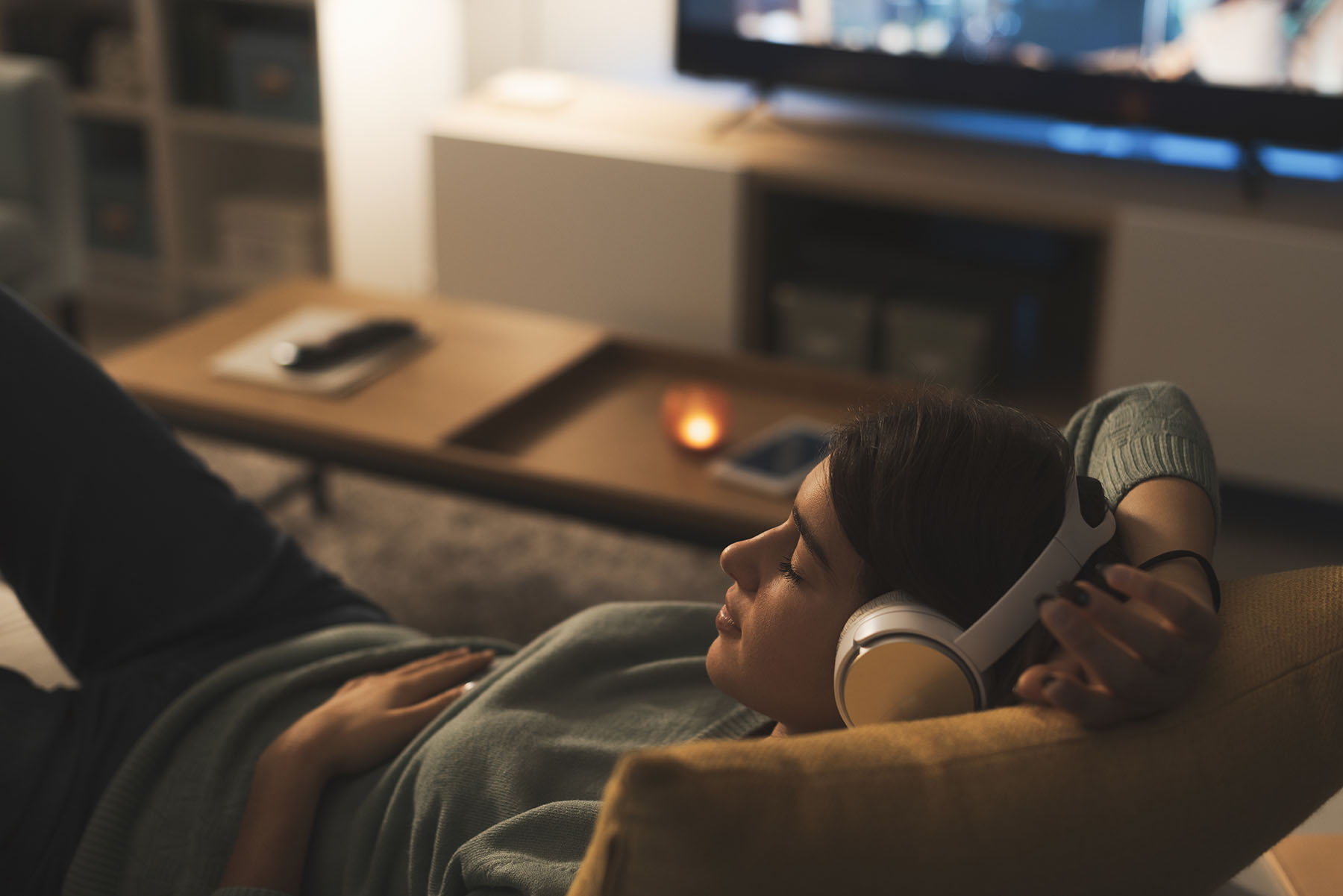White Noise and Sleep: What’s the Connection?

By now, we’ve all heard about white noise, that continuous soothing swoosh that helps many people drift off to sleep.
Its effects on crying infants, children with ADHD, and adults with insomnia have been studied for years.
“For a while now, we’ve known anecdotally that some sounds help people fall asleep faster and also sleep better,” says Alberto Rafael Ramos, M.D., M.S.P.H., research director of the UHealth Sleep Disorders Program. “Some research, small studies, confirm this.”
For example, one 2021 study showed that white noise improved sleep quality and sleep duration in New York City residents affected by loud environmental noises.
An older study also found that broadband sound administration or using constant low-level noise to block off a disturbing signal in the environment reduced the time it took to fall asleep.
Study authors concluded that the effect of white noise in a group of healthy subjects “was similar to the effect of eszopiclone 2 mg, a non-benzodiazepine hypnotic widely prescribed in the United States.”
However, a recent review of various sleep studies on white noise revealed mixed results.
On the one hand, white noise helped people fall asleep. On the other, it didn’t always have positive effects on the actual quality of sleep.
More research is needed on the subject, Dr. Ramos says, and before patients rush out to purchase a white noise machine (or phone app), they should realize efficacy isn’t guaranteed. It can vary from person to person.
“White noise is just one of the different tools we recommend when a person is having trouble with sleep,” he adds. “To a great extent, it’s trial and error to find what really works.”
While the public usually labels any sleep-inducing sound white noise, not all of them are classified as such. In fact, white noise is only one of the sounds in a sleep expert’s toolbox. There are two other kinds of noise – pink and brown noise. Each, explains Dr. Ramos, is defined by its frequency.
Here’s a primer on white, pink, and brown noise, how they differ:
White noise
It contains all of the frequencies across the audible sound spectrum, in an equal distribution of all frequencies. Consistent and continuous, it can block off outside noise, creating what sleep doctors call a “sonic wall.” The whir of a fan, the hum of an air conditioner, and even the static from your television fall into this category.
White noise has been used for situations other than sleep problems. Experts say it helps calm crying babies suffering from colic and improves auditory memory and new word learning in children with attention deficit hyperactivity disorder.
Pink noise
Pink noise, like white noise, contains all the broad frequencies on the sound spectrum but with one difference: the frequencies aren’t equally distributed. Pink noise has lower frequencies and fewer high frequencies, which makes the sound deeper.
Hence, it sounds more like the susurration (or whispering) of rainfall and less like static.
Small studies have shown that pink noise helped listeners with recall when tested on memory the following day. The research subjects did better than those exposed to no noise.
Sleep scientists believe this is because pink noise increases slow-wave brain activity during sleep while reducing brain-wave complexity. (Memory is helped by spending more time in this slow wave sleep.) In short, pink sleep can help bring about more stable sleep.
Brown noise
Brown sleep is even deeper sounding than pink because it has fewer mid and high-range frequencies, giving it more of a bass sound. (Think of the rumble of thunder.)
It has received much attention on social media lately, with some claiming brown noise works best to block outside sleep-interrupting sound. Not enough research has been done to confirm this, however.
If you or someone you know has sleep issues, experimenting with these different sounds may help.
“They don’t cause any harm, so it’s not going to hurt you,” Dr. Ramos says. “And if you see no benefit, you can always quit.”
There is, of course, no substitute for proper sleep hygiene.
Dr. Ramos recommends practicing good habits, with or without a noise machine.
- Keep a regular sleep-wake routine even during weekends
- Minimize light as bedtime draws closer
- Shut off all screens at least 30 minutes before bed
- Quit caffeine intake by lunchtime
- Eat a healthy diet, and exercise daily
“We’ve come to the realization that sleep is a requirement for optimal health,” he concludes. “Anything you can do to improve your sleep over time will also affect how you feel. It’s a great feeling to wake up refreshed the next morning.”

Ana Veciana-Suarez, Guest Columnist
Ana is a regular contributor to the University of Miami Health System. She is a renowned journalist and author, who has worked at The Miami Herald, The Miami News, and The Palm Beach Post. Visit her website at anavecianasuarez.com or follow @AnaVeciana on Twitter.
Tags: Dr. Alberto Ramos, higher pitched, lying awake, sleep routine, sleeping, sound machines, trouble falling asleep
